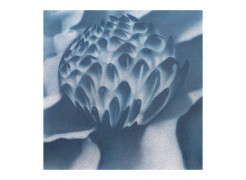Additional info:
Lucian Hrisav is a Romanian interdisciplinary artist who lives and works in Bucharest. After completing his bachelor’s (painting) and master’s degree (mural art) at the National University of Arts in Bucharest, he takes part in the development of some projects that aim to promote young art, such as the Multimedia Visual Arts Center (CAV-M) and Atelier 35. Lucian develops a noteworthy flexibility in choosing the mediums he uses in the creative process, a fact also supported by his ability to effectively exploit their expressive qualities. His art can be placed at the crossroads between high-class artistic culture and the urban feeling associated with the street art movement. This is due to the fact that he starts with classical forms of art, like drawing and oil or acrylic painting, in order to reach some hybrid methods that further reach out to the 3D realm through installations and sculptures. The trans-dimensional effect (whether it is the 2D–3D or the analog–digital transition) continues to appear throughout Lucian’s works, leaving behind its conceptual character and transforming into a creative mechanism that plays an important role in generating the final compositions. A main source of inspiration (and the most tangible example) can be identified within the digital processing of images. Distortion, glitch, rendering errors, and a lack of signal are all artifacts of an initiative to technologically compress reality, or, simply put, a way in which an original perception is altered to such an extent that it begins to lose its original character. Starting from this point and using his own techniques, Lucian visually describes our contemporary existence plagued by gadgets, advertisements, anxiety, impulses, desires, and failures. Whether it’s pure hedonism or a swing between existentialism and nihilism, his artistic perspective brings up a crucial point: the only thing that connects the subjective ways we choose to make sense of life is life itself. Thus, his art configures a world seen through the filter of a hyperactive positivity achieved by converting pessimism: a natural consequence of embracing the simple impulse to just “live”. In a more recent context, the main area explored by Lucian is based on a perspectival shift within the general history of art. His artistic practice seeks the return to classical genres of painting, such as the portrait, the still life, and the plein-air landscape. This revisiting does not happen by chance; it is directly connected to the artist's ever-present interest in both the ways in which images are transmitted to us and the ways in which those transmissions influence our understanding of the representations themselves. By developing a personal technique of spray painting on canvas, Lucian manages to produce already blurred images that are deliberately unclear, a kind of “lo-fi paintings”. The subject becomes the distorted world, as seen through an old TV screen and formatted without ever considering the aspect ratio setting. In other words, his creations render a broken world desperately trying to follow some formal patterns that have no relation to actual reality. Beauty and harmony are artificial concepts that have no place in a world of basic survival instincts, but to which we are drawn regardless. Through his aesthetic of choice, Lucian goes against this natural reflex, unmasking it in front of everyone (by delivering a visual iteration of the Baudelaire ideal) and presenting it for what it really is: a toxic illusion.
-
Vlado Martek
b. Zagreb, Croatia, 1951 -
Gellu Naum
Bucharest, Romania, 1915 - Bucharest, Romania, 2001 -
Ervant Nicogosian
Odessa, Ukraine, 1928 - Bucharest, Romania, 2014 -
2Meta
-
Ghassan Zard
b. 1954
